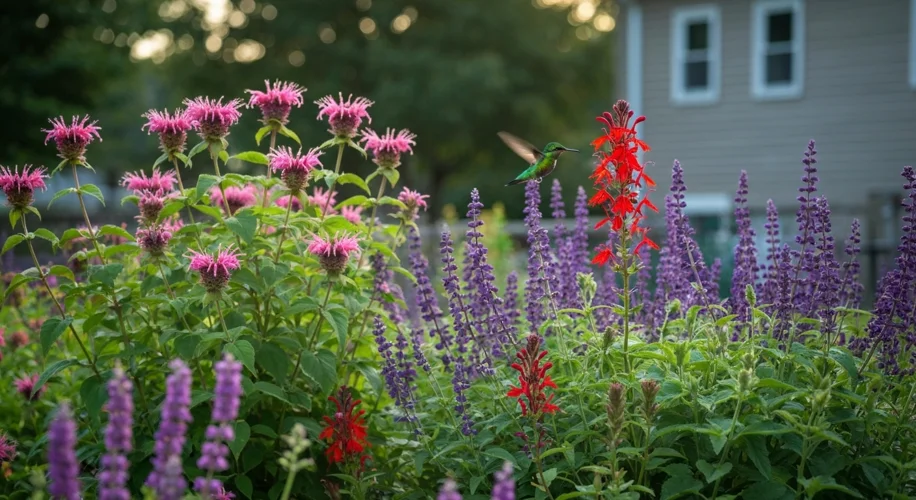As a gardener, I’ve learned that patience is often rewarded with the most spectacular sights. And for me, nothing beats the arrival of hummingbird season.
This year, the first tiny flash of iridescent green zipping past my window on August 9th, 2025, felt like a true gift. It’s a signal that the summer’s hard work in the garden has paid off, not just for me, but for these incredible little visitors.
Hummingbirds are fascinating creatures. Did you know they are the only birds that can fly backward? Their ability to hover and dart through the air with such precision is truly a marvel. Their wings can beat up to 50 times per second, creating that signature humming sound that gives them their name.
To welcome them, I’ve spent the last few years transforming a section of my suburban backyard into a dedicated pollinator garden. It’s not just about aesthetics; it’s about creating a reliable food source and habitat. I focused on planting native flowers that are known to attract hummingbirds. Flowers like bee balm (Monarda), cardinal flower (Lobelia cardinalis), and salvias are always big hits.
These flowers provide the high-energy nectar hummingbirds need. What’s amazing is that as they feed, they also transfer pollen between flowers, playing a crucial role in plant reproduction. It’s a beautiful symbiotic relationship.
Beyond the flowers, I also make sure to have a few feeders out. Keeping them clean and filled with a simple sugar-water solution (one part sugar to four parts water, boiled and cooled) is key. I never use red dye, as it’s unnecessary and can be harmful.
Watching them is more than just a hobby; it’s a connection to nature. Seeing them chase each other, hover at a feeder, or sip nectar from a bloom is incredibly grounding. It’s a reminder of the vibrant life that exists just outside our doors when we provide the right conditions.
If you’ve ever thought about creating a space for wildlife, I highly encourage it. Starting small with a few hummingbird-friendly plants can make a big difference. It’s a rewarding way to contribute to local ecosystems and bring a little bit of wild magic right into your own backyard. I’m already looking forward to seeing who visits next!

